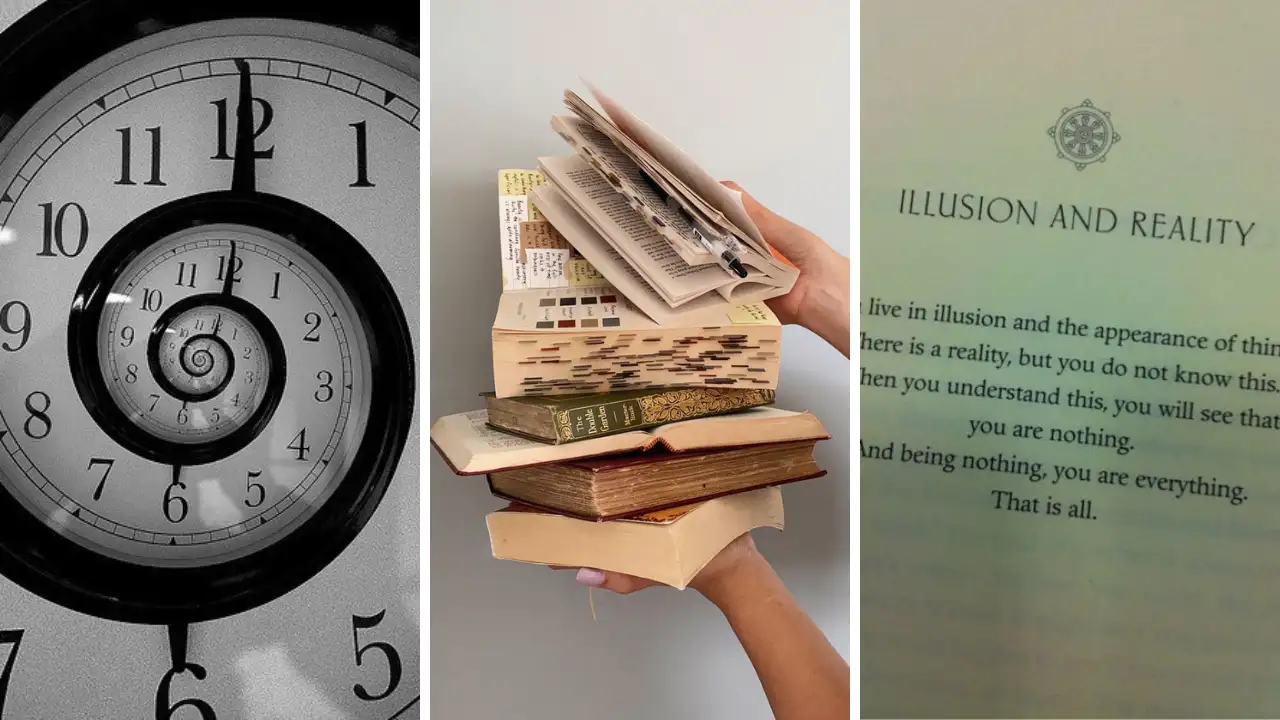By Simran Sukhnani
Copyright timesnownews

10 Books That Make You Feel Like Time Is Just an Illusion, Time, memory, and reality unravel in these ten extraordinary books. Each story stretches or collapses moments, blurring the line between past, present, and future. From dreamlike poetry to surreal narratives and mind-bending adventures, these reads challenge conventional perception and immerse you in worlds where chronology feels fluid. Perfect for lovers of literature that bends reality, these books invite reflection, wonder, and a sense of timelessness long after the last page. Einstein’s Dreams by Alan Lightman, A poetic exploration of time through the imagined dreams of Albert Einstein. Each chapter presents a world where time behaves differently, loops, stops, or stretches infinitely. Blurring science and philosophy, this short novel contemplates love, mortality, and human longing. Lightman’s lyrical prose transforms abstract physics into intimate human experience, making readers ponder how perception shapes reality and how fragile, fluid, and mysterious the passage of time truly is. The Garden of Forking Paths by Jorge Luis Borges, Borges’ labyrinthine novella weaves multiple realities and divergent timelines, where every decision spawns infinite possibilities. A tale of espionage and philosophy, it challenges conventional narrative and perception. Readers navigate a world where cause and effect, past and future, merge and split endlessly. Borges’ mastery of language and structure bends the very notion of time, creating a cerebral reading experience where every moment feels both singular and eternal. , The Melancholy of Mechagirl by Catherynne M. Valente, A collection of stories and a novella blending fantasy, myth, and sci-fi, where time twists and loops unpredictably. Valente’s lush, lyrical prose immerses readers in worlds that defy conventional chronology. Identity, memory, and myth intertwine, creating nonlinear narratives where beginnings and endings blur. Each tale invites reflection on mortality, destiny, and the human imagination. The book’s dreamlike structure makes readers question whether time is a path or a labyrinth. To the Lighthouse by Virginia Woolf, Woolf’s modernist masterpiece collapses linear time through stream-of-consciousness narration. Memories, reflections, and fleeting moments intermingle, turning hours into lifetimes and years into minutes. The ebb and flow of human thought mirrors the sea, creating an intimate meditation on existence, art, and family. Woolf’s nuanced prose allows readers to feel time’s elasticity, capturing both the ephemerality of life and the enduring nature of perception in a hauntingly beautiful way. The Man Who Folded Himself by David Gerrold, This classic time-travel novel follows a man who inherits a mysterious belt allowing him to navigate time freely. As he loops, meets versions of himself, and alters events, the narrative explores identity, desire, and paradox. Gerrold’s inventive storytelling highlights how the self can fracture and expand across time. With each twist, the boundaries between past, present, and future dissolve, creating a thrilling, mind-bending exploration of temporal freedom. , Ice by Anna Kavan, Set in a surreal, frozen apocalypse, Kavan’s novel bends time through dreamlike prose and disjointed events. The world is perpetually in motion yet frozen, creating an eerie sense of suspension. As the protagonist pursues elusive characters across an icy landscape, readers feel temporal dislocation and haunting inevitability. Ice captures the fragility of memory, obsession, and perception, crafting an unsettling, hypnotic experience where past, present, and future merge into one chilling continuum. Kindred by Octavia E. Butler, A gripping story where a modern Black woman is repeatedly pulled back to antebellum Maryland, experiencing slavery firsthand. Time collapses as past and present collide, forcing moral and emotional reckoning. Butler explores history, trauma, and the human condition, showing how the past persists in the present. The novel’s tension and immediacy make every second feel urgent, illustrating that time is neither fixed nor safe, but a living, powerful force. Nightwood by Djuna Barnes, A dark, modernist exploration of love, loss, and identity, where time feels fluid, fragmented, and disorienting. Barnes’ poetic language moves seamlessly across decades, intertwining memories and experiences in a dreamlike narrative. The novel’s dense, surreal imagery creates a timeless atmosphere, immersing readers in a world where past, present, and emotion are inseparable. Nightwood is both haunting and transcendent, a rare work that transforms the perception of human temporality. , Sum: Forty Tales from the Afterlives by David Eagleman, A collection of forty imaginative visions of the afterlife, each bending time and existence. Eagleman explores mortality, eternity, and consciousness with wit and philosophical depth. Some tales stretch seconds into centuries, others collapse vast epochs into a single thought. By reimagining the structure of life and death, the book challenges conventional notions of linear time. Each story is a thought experiment, leaving readers fascinated and unsettled by the malleability of existence. The Ten Thousand Doors of January by Alix E Harrow, A beautifully written portal fantasy where hidden doors lead to other worlds, and time flows differently in each. January navigates these realms while uncovering secrets that span lifetimes. Harrow’s lyrical prose intertwines memory, myth, and adventure, making chronology feel mutable. The novel explores how stories, love, and identity transcend linear time. Every step through a door challenges perception, leaving readers suspended in a magical, timeless narrative.



